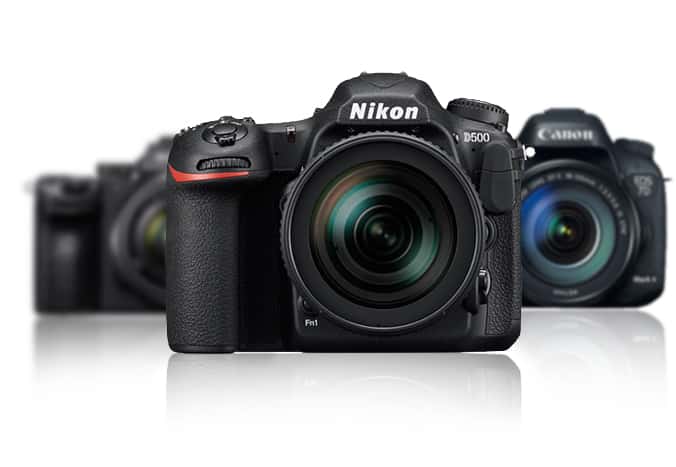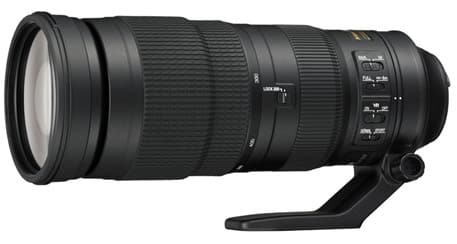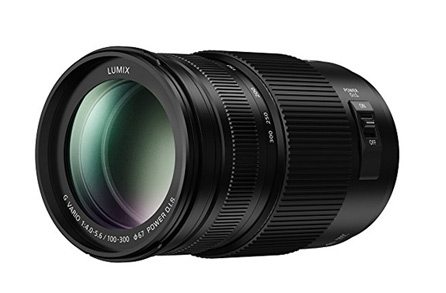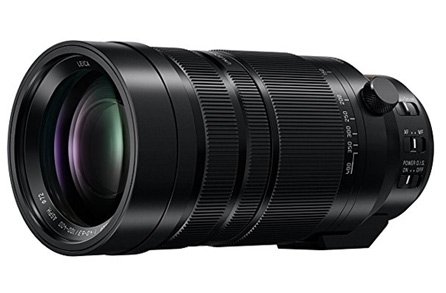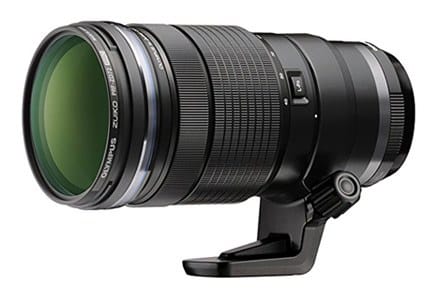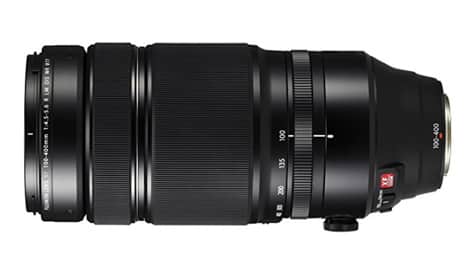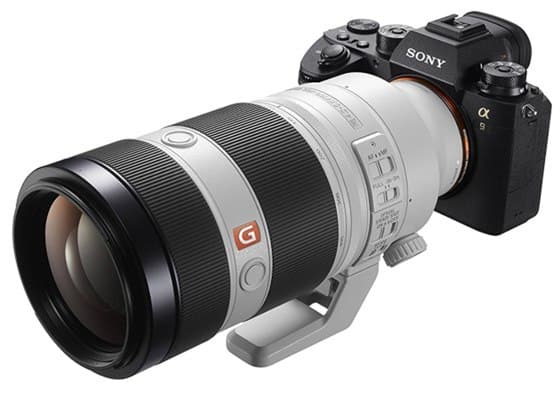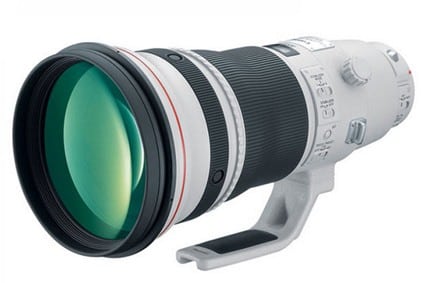Wildlife photography is one of those things where having the right gear is extremely important.
You need fast auto focus, plenty of frames per second, good high ISO performance and even more.
Then there’s the weather, hot, cold temperatures, you name it. You need a camera that can work in all sorts of unexpected situations, and still deliver high quality images.
On top of that, the lenses you use are just as important. For wildlife and most birds you will want at least 300mm. At the bottom, you can find our wildlife lens posts for every brand. Take some time to learn more about how to select a wildlife lens to fit your needs.
Table of Contents
Toggle10 Best Cameras for Wildlife Photography:
- Nikon D500
- Sony A7 III
- Olympus OM-D E-M1 II
- Sony A9
- Canon EOS 7D II
- Nikon D850
- Pentax K-3 II
- Sony A6500
- Canon EOS-1D X II
- Nikon D5
We discuss all of these cameras below, but first let’s go through what makes a camera good for photographing wildlife/action.
If you decide to buy anything after clicking on our Amazon links, you automatically support us. It’s what allows us to write guides such as this one.
What Camera Features are Important for Wildlife Photography?

You could use any camera for wildlife, but these are the specifications that really make it more action oriented.
- Auto Focus – First, you want as many AF points as possible, and spread out across the viewfinder. Anything with more than 50 points is great. Keep in mind that phase type AF points are more accurate than contrast type points when it comes to shooting action.
- Many cross-type AF points. These are even more accurate in difficult situations (perfect for wildlife and sports)
- EV focusing. It helps having a DSLR that can focus even in -3EV as you’ll often shoot in low light
- Frames per Second – Many cameras can shoot well over 8fps, some even much higher than that. The more shots per second, the better your chances you have of getting high quality photographs.
- Buffer – Buffer size lets you know how many pictures you can take before the buffer needs to be empty; aka, how long you have to wait before taking pictures again. This is real simple math; if the buffer for, let’s say JPEG files is 150, and your camera takes 10 pictures per second, you can continuously shoot for 15 seconds. This may not sound like a lot, but in 99% situations, most people never go above ~2-3 seconds.
- Body Design – The camera needs to be comfortable and have useful buttons accessible without fiddling through the menus. You also want the camera to be environmentally sealed in case of water or other difficult weather conditions (sand, dust, etc.). Not having it is not a deal breaker, but it will allow you to be more comfortable in those situations.
- Battery Life – Seeing as mirrorless cameras use a lot more power, their battery life isn’t as long as with DSLRs. Still, while the majority state they last up to ~350 shots, you can expect twice as long life in actual use. Don’t forget to bring a few extra batteries though!
- Sensor Size – We have 3 different types of sensors in advanced cameras. The first, biggest, are Full Frame sensors. Second are APS-C, while the smallest ones are called Micro Four Thirds. While you don’t have to worry too much about this, it helps knowing that there’s this thing called crop factor. If you put a 100mm lens on a full frame (FF) camera, the field of view stays the same. If you put that same 100mm lens on an APS-C camera that has a 1.5x crop factor, it now suddenly appears much longer; it’s identical to a 150mm lens on a FF camera (100mm x 1.5 = 150mm). Micro Four Thirds sensors are even smaller, and therefore have a 2x crop factor, literally doubling your focal length equivalent. Nothing happens to your camera or lens, it’s simply due to the difference in sensor size.
- Memory Cards – Most cameras use SD cards, more expensive ones XQD. If your camera’s memory card slot supports UHS-II speed, this means you can get much faster writing and reading speeds compared to UHS-I, which is what the majority of cameras have today. UHS-II means less waiting times for each photograph to be written onto the card and can make a difference in such quick situations as wildlife or sports. Imagine having to wait a few seconds after every shot… luckily, this is not the case nowadays, at least not if you have a memory card from a quality brand (Sandisk, Lexar, Kingston, Sony etc.).
Full Frame or APS-C?
Do you go with an APS-C and get much faster frame rates, 1.6x longer reach without spending more on lenses, in a smaller and lighter body?
Or do you go with a Full Frame DSLR with improved high ISO noise levels, but no crop factor, bigger price tag and less reach?
We think APS-C is the ultimate choice for wildlife, especially because weight and size play an important role here. With the 1.6x crop factor you need to spend less to get as close to your subject, and sometimes that price difference can be enormous. It also means your lenses can be lighter, but it’s up to you to decide what you need. If you have the budget for a FF DSLR and need the low light performance, you’ll probably want one. Or both APS-C and FF if the word ‘heavy’ doesn’t exist in your dictionary.
For example, a 300mm lens on APS-C has the same field of view as a 500mm lens on Full Frame, simply because of that 1.6x crop factor (300 x 1.6 = 480mm, but there’s no 480mm lens).
Plus, today’s APS-C technology is extremely good and many DSLRs and Mirrorless cameras are perfectly usable at ISO 3,200 – 6,400 and beyond
Frames per Second & Buffer
Why do frames per second matter here?
Because animals are usually moving, and the more pictures you can take in a single second, the more chances you have of getting that great shot.
There are two other reasons why having more is a big plus:
- Shake – Shooting with a long shutter speed can result in blur. By taking 10 pictures in a second, one will be sharper then the rest, usually towards the middle where you were the most stable.
- Focus – Even the most expensive cameras will sometimes slightly miss focus. Of those 10 pictures you took, you maximize the chances of having more shots in complete focus.
You’ll pick up these techniques as you shoot and learn. Photographing with telephoto lenses can be tricky at first, especially if the weather conditions aren’t perfect.
Your DSLR’s buffer size is also extremely important. If your camera can do 10fps but has a buffer of 8 shots, that would mean you’d need to wait for it to empty before you can start taking pictures again. In a studio this may not matter, but in wildlife where every fraction of a second is important and you can’t tell the animal to do that one thing again, you want a DSLR with a big buffer for JPEG and RAW files (or at least one).
The speed of your memory card is also a big factor, so check out our memory card buying guides for today’s cameras. Certain memory cards aren’t even fast enough to write such big files quickly.
Build Quality & Size

Rain, snow, heat, cold. Just a few situations you’ll most likely have to face.
That’s why it’s important to have a camera that is weather-sealed and won’t stop working when a little bit of water hits it. You can buy rain covers and other accessories to keep your gear safe, but it’s always best if your camera itself is protected as best as possible.
Canon and Nikon entry-level DSLRs are usually not that good in this department, so we don’t recommend them in this guide. Spend more, and you’ve got yourself a secure body.
Pentax, on the other hand, has almost all of their DSLRs weather sealed.
We rank the following 10 cameras based on price/performance ratio. However, it doesn’t mean that if it’s not in the top 3 that it’s bad, it could simply be that it’s more expensive than a similar, lower priced mdel.
1. Nikon D500
Our top pick is easily the Nikon D500. It’s one of the best Nikon cameras to ever be released, and for the price you pay you definitely get an exciting all-around wildlife camera.
Why is it good camera for wildlife?
As of writing this guide, the Nikon D500 is hands down the best APS-C DSLR on the market.
It has a 20.7MP sensor, which isn’t a lot by the standards of more expensive cameras, but this has many positive advantages. Having too many pixels can compromise the image quality, especially when shooting at higher ISO speeds. Since 20 is more than enough for a large majority of people, it’s also good because this allows the camera to be able to shoot quicker.
Speaking of speed, the D500 can shoot 10 frames per second, with a buffer of 200 files (RAW and JPEG). What this means is, you can take up to 200 pictures in a single shooting without waiting for the camera to take a break. In other words, an enormous amount. If you do the math, this means you could hold the shutter button for 20 seconds.
Impressive numbers don’t stop there. There are 153AF points, with 99 of them cross-type. Out of those, 55 can be selected but the camera uses all points to “look” at the world. The D500 has a 180,000 pixel RGB sensor and it’s really good when it comes to tracking all sorts of subjects. The 55 AF points are positioned really well so you can focus on your subject without constantly sticking towards the center.
Assuming you use a fast XQD memory card, the D500 can shoot up to 200 RAW files, just like the Nikon D5. High ISO is also extremely well handled, as it shows far less artifacts and better color than the Canon 7D II or any other DSLR at similar prices. It can actually go up to ISO 1,638,400, but we recommend sticking to 51,200.
The list goes on. Nikon D500 can record 4K videos at 30p with a 1.5x crop factor, or Full HD at 60p. It’s got a 3.2″ tilting touch-screen LCD monitor with 2,360,000 dots. Nikon finally stepped up in the video department, and so far this is the only APS-C 4K DSLR. The viewfinder is also big and bright, with 100% coverage and 1x magnification.
With all those features, what’s even more impressive is that the battery lasts around 1240 shots per charge. That’s more than the D7200! As expected from 2016+ cameras, it has built-in WiFi and USB 3.0.
You can buy it at Amazon or see more reviews here.
2. Sony A7 III

The Sony A7 III is a fantastic deal for the price. It’s like you took the best from every Sony full frame camera and put it in an affordable body.
Why is it good camera for wildlife?
Just like the more expensive A9 we will cover below, the Sony A7 III has a 24MP sensor and a whopping 693 AF point system. These two features together make the camera perfect for any imaginable scenario; portraits, studio, extreme sports and of course wildlife photography. The dynamic range, colors and detail of the A7 III’s sensor are excellent for the price.
It can shoot 10 frames per second and has a very good buffer size with 177 JPEG shots and 89 RAW. You can take pictures for almost 17 seconds before the buffer fills, so make sure you get yourself some good memory cards. The A7 III has 2 x SD slots, the first one supports UHS-II speeds. You can see our A7 III card guide here.
Just like its more expensive siblings, it features a 5.5 axis built-in stabilization that you can always count on, a 4K video recording mode at 30p and ISO range up to 204,800. For low light/indoor shooting or just no-flash photography, it’s high ISO performance is very well handled.
If you want to record videos, you’ll be happy to know that the A7 III can comfortably record 4K (1.2x crop) at 30fps and even 1080p at 120fps for some amazing animal slow motion. Because of the new image processor, videos shot at higher ISO should look better now. One excellent addition is the touch screen capability that allows you to focus/operate the camera simply by pressing anywhere on the screen. This is slowly becoming a standard for all cameras, regardless of their price.
For transferring images, the Sony A7 III finally has a USB 3.0 port. To top it of, you’ve also got an AF joystick on the back of the camera so you can choose your focus point/group quicker, while the battery lasts up to 710 shots compared to 390 on the older models.
The Sony A7 III has the perfect mix of features and low price, especially for a full frame camera. It’s the ideal travel camera that can also be used professionally for any scenario imaginable. As we mentioned, whether it’s concerts, weddings, studio portraits, landscape or wildlife, you can count on it. Make sure to check out our best lenses for the A7 III.
You can buy it at Amazon or see more reviews here.
3. Olympus OM-D E-M1 II
The Olympus E-M1 II is the most advanced Olympus up to date. Unlike Fuji and Sony, Olympus uses Micro Four Third (MFT) sensors in their mirrorless cameras. Instead of a 1.5x crop factor, it’s 2x, so any lens you mount has a field of view that’s twice as long as if you would mount it on a full frame camera.
Why is it good camera for wildlife?
Specifically because of that smaller sensor. It’s a slight disadvantage of landscape, but a huge advantage for wildlife. Any lens you put on (say a 200mm lens) would give you the same field of view as a 400mm lens on a full frame camera (let’s say Sony A9). This allows you to buy lighter, smaller and less expensive lenses.
The Olympus OM-D E-M1 II has a new 20.4MP sensor and weighs a mere 20.2 oz (574g) with the battery. A big reason for the small weight and size is because of the smaller sensor. The E-M1 II is weather-sealed and up to standards of any nature photographer, so no need to hide when it starts, snowing or when the temperature drops.
What we really love about Olympus is their in-camera image stabilization (up to 5.5 stops). It makes the E-M1 II a much better choice for shooting on the go compared to cameras without it, simply because you don’t need to carry a tripod or raise the ISO when shooting in low light situations. Naturally a tripod is always the best choice for sharp results, but the built-in IS is something we all want in a camera. It works very well for video too, otherwise your footage may look shaky if you don’t have any support.
Speaking about video, it offers DCI 4K at 24p, a headphone and microphone jacks and of course the built-in 5-axis stabilization. Unfortunately Full HD video looks soft, so if you’re going to record, do it in UHD 4K for maximum sharpness.
The ISO range goes from 100 to 25,600 but can expand down to 64. Image quality at 6,400 is still quite good, and the shots look usable. Go over and you’ll see the limitations of a small sensor for noise performance, so stick to levels below that. For sports photography, it manages to shoot an impressive 18fps with a JPEG buffer of 118 shots (102 for RAW). It’s faster than most on this list because it has a smaller sensor.
Like most other cameras, the LCD screen size is 3.0″ , but it offers touch-screen control and can fully tilt and swivel, making it easier to shoot in difficult positions (subjects way below or above you). Battery life is also impressive with 440 shots. Not only that, the battery recharges 50% faster than the previous model.
You can buy it at Amazon or see more reviews here.
4. Sony A9

The Sony A9 is one of the most exciting cameras on the market right now, for a very good reason. It’s very similar to the A7R III in the sense that it can do it all.
Why is it good camera for wildlife?
The A9 has a 24.2 megapixel full frame sensor with ISO up to 204,800. Because of the lower resolution, the A9 shows less noise at high ISO compared to the A7R III.
It can shoot 20 frames per second! That’s crazy fast, which is why this Sony is ideal for wildlife, sports and any other type of action. To top it of, the A9’s fastest shutter speed is 1/32000. All this speed wouldn’t matter if the buffer would be small, but it’s the opposite. You can take up to 362 JPEGs or 241 RAW files before the buffer empties, so make sure to get a really good memory card.
One other feature where the Sony A9 is unique is its auto focusing system. There are 693 phase-detection AF points and they cover 93% of the viewfinder, meaning you expect accuracy in center and corners. In the early days of mirrorless cameras, their main disadvantages were unreliable auto focusing, but all of this has changed in the past ~2 years.
The rest is very similar to the A7R III. There are 2 SD memory card slots, an AF joystick for focus point selection, 4K video recording, an articulating 3.2″ LCD touch screen, big battery life up to 650 shots and environmental sealing.
The Sony A9 is an amazing camera if you’re looking for the best combination of speed, pixels, quality and video features. It’s best suited for photographing any type of movement, but you can also use it for portraits, weddings, landscape and so on. It’s not the cheapest out there, so it depends on how serious you are about photography.
If it wasn’t so expensive, the A9 would easily be number one our list. It’s got everything you’d want in a camera ready for wildlife, birds, sports etc. The 24MP sensor delivers great shots, you can capture 20 frames per second, and the AF system has 693 phase-detect points. There is no blackout on the LCD screen when taking pictures, something common with other cameras (let alone DSLR cameras). Because of its electronic shutter, you can shoot up to 1/32000.
The A9 also has 2 x SD slots with 1 supporting UHS-II. One of the biggest advantages compared is its battery life; average 650 per charge. Since this is usually twice as long in actual use, the A9 is better than even some DSLR cameras.
You can buy it at Amazon or see more reviews here.
5. Canon 7D Mark II
 Here’s the best APS-C camera from Canon, the Canon 7D Mark II. It was released in 2014 and replaces the original 7D, a truly epic camera for its time.
Here’s the best APS-C camera from Canon, the Canon 7D Mark II. It was released in 2014 and replaces the original 7D, a truly epic camera for its time.
Why is it good camera for wildlife?
Everything about it screams sports and wildlife.
10 frames per second, Dual Digic 6 processor that allows the camera to be fast at everything, and 1 x CF and 1 x SD memory card slots. Native ISO goes to 16,000, but is expandable to 51,200.
It’s got a 20 megapixel sensor and 65 all-cross type AF system. Sixty five! It’s super fast and accurate, and the 7D II has a joystick that allows you to precisely switch between AF points in any direction. You can do that on the Canon 80D too, but it’s much easier and you have less chances of selecting the wrong point like this.
 Canon EOS 7D II | Copyright Richard Simon
Canon EOS 7D II | Copyright Richard Simon
The buffer is also impressive with 1090 JPEG and ~25 RAW files (okay scratch that, RAW buffer is quite bad). CF cards can reach faster speeds than SD, but cost more. Check out our 7D II cards guide.
The shutter cycle is rated at 200,000 shots, it’s got a built-in GPS, is environmentally sealed and tough, almost identical to the build quality of the much more expensive 1D X. For fast file transferring it’s got USB 3.0 and the battery lasts around 670 shots so you should think about getting an extra battery if you often shoot for longer periods.
If you’re looking for the fastest APS-C Canon and already have a few lenses, there’s nothing better than the 7D II. However, Canon could release a new version sometime in 2019, so if you’ve got the patience we do recommend you to wait it out. The 7D II is good, but it doesn’t stand out anymore with all these new models around.
You can buy it at Amazon or see more reviews here.
6. Nikon D850

The Nikon D850 is a serious workhorse, and a camera that almost no photographer could say no to.
Why is it good camera for wildlife?
First, it’s got a big 45MP full frame sensor so printing large or cropping is an easy task. You’ve got so many megapixels that you might even become lazy with trying to get closer to the animal, seeing as you can just crop and still retain good image quality. Just kidding of course, but it is a huge advantage for small or hard to reach animals.
Speed wise, it shoots 7 frames per second but that can turn into 9 frames if you use the NIkon MB-D18 battery grip. Considering this is a megapixel monster, 7fps is very quick for a DSLR that can do all of this. The buffer size is very impressive, allowing you to take up to 51 (14-bit) RAW files, compared to 28 on the previous D810 that had less pixels. JPEG wise, it’s next to unlimited.
 Nikon D850 | Copyright Andy Harris
Nikon D850 | Copyright Andy Harris
The native ISO range is from 64 to 25,600, but can expand up to 32-102,400. Noise performance is said to be increased by 1 stop compared to the D810, but don’t be surprised to get noisy results if shooting at such high levels.
The D850 uses the exact same AF system as found in the D500 and more expensive D5. This means 153 points, 99 of those are cross-type. It’s very good at locking onto your target, even in low light.
Video wise, it can record 4K at 30/25/24p, and has a nice touch-screen tilting 3.2″ LCD monitor with 2.35 million dots. In order to store such huge files, the D850 has 1 x SD (UHS-II compatible) slot and 1 XQD for when you really need that speed. To make it even better, you’ve got a USB 3.0 connection and a 1840 shots rated battery life. Whatever Nikon is doing in the battery department is amazing.
You can buy it at Amazon or see more reviews here.
7. Pentax K-3 II
The Pentax K-3 II is truly an interesting DSLR. Cheaper and faster than most!
Why is it good camera for wildlife?
We once again see a 24.4MP APS-C sensor. Pentax has a really cool feature though, you can turn on/off the anti-aliasing filter which should result in slightly sharper images than with the AA filter turned on. You may see more moiré patterns, but you’ll rarely get it in wildlife photography. Or you can simply turn the AA filter back on, voila.
The ISO performance is also nearly identical to both DSLRs above as you can see in this comparison. It goes from 100 to 51,200, but we recommend sticking to 6,400 max if you want acceptable quality.
In terms of auto focus, it doesn’t have nearly as many AF points as the two cameras above. There are 27 AF points, with 25 of them being cross-type. It’s still plenty to work with nonetheless. You have to take into account that the K-3 II is quite cheap though, and was released back in 2015.
Video is not Pentax’s strong point so while it can do Full HD at 60i, we’re not impressed by either the auto focus or overall quality.
The K-3 II has 92 seals for moisture and dust resistance and will work flawlessly in cold (down to 14 degrees Fahrenheit, or -10 Celsius) and hot conditions. That’s not to say other DSLRs on our guide won’t work in such conditions, but with the K-3 II you can be a lot more sure that nothing will be damaged if you often shoot in such places. For fun, check out a few stress tests here and here.
You can buy it at Amazon or see more reviews here.
8. Sony A6500
The announcement of the Sony A6500 was quite a surprise. We expected the camera of course, but not so soon as it came out only a few months after the A6300 was released.
Why is it good camera for wildlife?
It uses the same 24.2MP APS-C sensor so image quality, colors, dynamic range and noise are all identical. The amazing 425 phase-detection AF point system is still as fast as ever.
The 3 biggest improvements are:
- 5-Axis Built-in Image Stabilization
- Touch-Screen LCD
- Bigger JPEG and RAW Buffer
The built-in stabilization is a huge huge advantage, especially if you own lenses that don’t have any. If you use a lens that does have OS then the two work together. For video, telephoto and low light situations, anything that can compensate for your movement is a welcome addition. 5 stops is a difference between shooting at 1/8 instead of 1/250, while still getting a crisp shot. It depends on each situation of course, and it does not freeze a moving subject, only a fast shutter speed does that. It will help you when you’ve been shooting for hours and are too tired to be 100% steady all the time.
Having a touch-screen LCD monitor (same size and resolution as A6300) makes the process of selecting the focus point quicker and easier, especially when recording videos.
Both cameras shoot at 11.1 frames per second, but the Sony A6500’s buffer is bigger. In JPEG mode, you can now take up to 231 instead of 44 shots, and 110 instead of 22 RAW files. All of this thanks to a new LSI chip (it basically handles most operations of the camera). The shutter lag time has also been slightly reduced and the camera turns on 0.1s quicker.
It can record 4K videos at 30/25/24p and even 120fps in Full HD, perfect for slow motion clips. If you’re interested in video capabilities of the new A6500, check out the NoFilmSchool preview. Unfortunately it seems like recording 4K videos for too long still sometimes results in overheating.
We really like the A6500, even though there aren’t many new features added. The ones that are new though, such as 5-axis IS and touch-screen, are super helpful and will result in less blurry photos and videos. It does cost $400 more but it’s worth it.
Another advantage that most don’t realize at first is the compact size and weight. The A6500 is really small compared to other cameras in this list, so if traveling light is your main priority, this is it. It’s ready for wildlife from the moment you turn it on.
You can buy it at Amazon or see more reviews here.
9. Canon 1D X Mark II
The Canon 1D X Mark II is the best Canon offers. Just look at the price and you will understand.
Why is it good camera for wildlife?
It uses a new 20.2MP full frame sensor, with great colors and quality. For a DSLR with a FF sensor, it can shoot very fast; 14 frames per second! Set the camera to Live View and you can actually take 16 pictures in a second!
There are 61 AF points (41 cross-type) and the 1D X II has a 360,000 pixel metering sensor. The 5 center points are actually dual cross-type for even better accuracy.
Native ISO is 100-51,200, but can be expanded from 50 to 409,600. Being a full frame sensor, the camera’s high ISO performance is really good so it’s perfect for late night wildlife (or early morning for that matter). Both flagship Canon and Nikon DSLRs are also intended for indoor sports use so you know they can do it all.
 Canon EOS-1D X II | Copyright Thomas Winstone
Canon EOS-1D X II | Copyright Thomas Winstone
Buffer for JPEG is unlimited, while you can take 170 RAW files before the buffer fills. Make sure to check out our 1D X II memory card guide as the camera has 1 x CF and 1 x CFast slot.
4K video is available at 60fps, and the 1D X II comes with Dual Pixel AF technology. The auto focus in video is really accurate and usable for even faster subjects, so in a way you could use the 4K 60fps and grab any of those 60 frames you like, but at a much smaller size obviously (4K is 8.8 megapixels). Nonetheless, it’s a cool “trick”.
You can buy it at Amazon or see more reviews here.
10. Nikon D5
And we’re down to the most expensive of them all, the full frame Nikon D5.
It comes in two versions; 2 x CF or 2 x XQD memory card slots. We recommend going with XQD so you can use the 200 RAW buffer without any delay. Here’s our XQD guide for the D5.
Why is it good camera for wildlife?
Well, it better be at that price. This is literally the best Nikon you can get and most photographers using it already own a couple of Nikon lenses and equipment. The body is big and heavy, but it’s made to be used outdoors in all sorts of difficult conditions. The battery life is excellent for long outdoor shoots as it lasts for ~3780 shots! Not a mistake, it really lasts that long.
It’s got an Expeed 5 processor and uses the same 153-point AF system we have in the NIkon D500. Again, 99 of those points are cross-type but only 55 can be selected.
It shoots 12 frames per second and if you thought the maximum ISO of D500 was ridiculous, the D5 can expand up to 3,280,000. While the low light performance is quite incredible, it’s not ISO 3 million incredible. Up to ~102,400 the D5 delivers quite good looking images.
Then there’s the 3.2″ LCD touch-screen LCD so you can select your focus point when recording 4K videos at 30p.
You can buy it at Amazon or see more reviews here.
You can shoot wildlife with any camera so don’t be discouraged if what you own is not on our guide. It’s just that we feel that the value for the money of these DSLRs is the best, as well as their features, build quality and more.
If you want to see wildlife lens guides, take a look at these:
Related Articles
Best Nikon Lenses for Wildlife and Birds in 2022
4 Keys to Selecting the Best Nikon Wildlife Lens. 1. Long Focal Length 2. Fast Auto Focus 3. Big Aperture...
Read MoreBest Micro Four Thirds Lenses for Wildlife and Sports
For wildlife and sports photography, Micro Four Thirds cameras and lenses are ideal. They’re small, compact, lightweight and due to...
Read MoreBest Panasonic Lenses for Wildlife in 2022
For wildlife and birds, you want a telephoto lens that will get you extremely close to your subject. Sometimes, you...
Read MoreBest Olympus Lenses for Wildlife in 2022
Olympus cameras are excellent for wildlife photography due to their small sensor and compact size. For wildlife and birds, you...
Read MoreBest Fujifilm Lenses for Wildlife and Birds in 2022
Having the right Fujifilm lens for wildlife photography is very important, because the focal length is not the only thing...
Read MoreBest Sony Lenses for Wildlife & Birds
Sony mirrorless cameras are some of the most exciting on the market. With high megapixel count and fast continuous shooting...
Read MoreBest Canon Lenses for Wildlife and Birds in 2022
When it comes to wildlife photography, you usually want to get as close to your subject as possible. Sometimes that’s...
Read MoreFirst and foremost, I’m a husband and father. Then professionally I’m photographer, designer, blogger, and Esty store owner. My homebase is near the stunning Wasatch mountains in Utah but I love traveling with my family as part of our homeschooling journey. I also love teaching and helping out others. My faith is one of the biggest aspects of my life and brings be a consistent joy that I haven’t found in anything else. My main blog is BestPhotographyGear.com and I strive to make photography simple for anyone looking to learn or find gear for their individual needs. By nature, I like to study, research, and analyze things and I use that help provide the best advice and reviews I can.

